Christopher Bridges
Simultaneous Multivariate Forecast of Space Weather Indices using Deep Neural Network Ensembles
Dec 16, 2021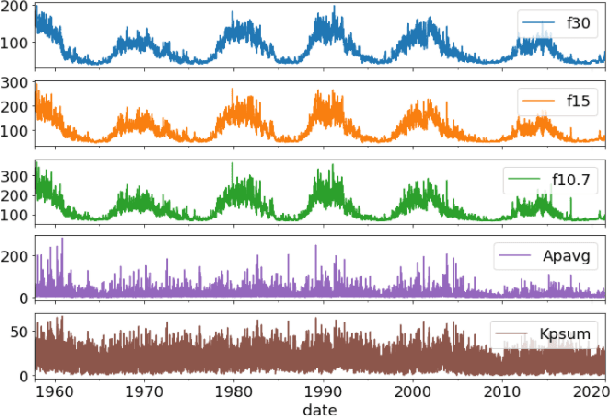
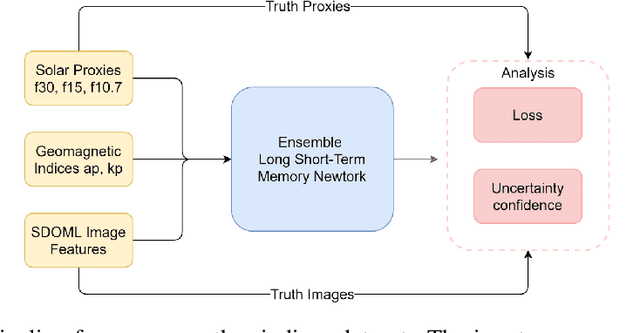
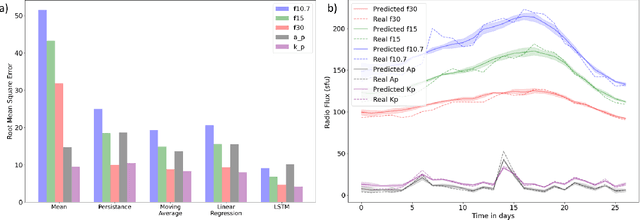
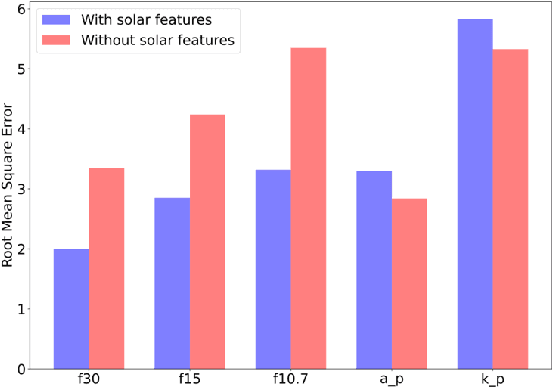
Abstract:Solar radio flux along with geomagnetic indices are important indicators of solar activity and its effects. Extreme solar events such as flares and geomagnetic storms can negatively affect the space environment including satellites in low-Earth orbit. Therefore, forecasting these space weather indices is of great importance in space operations and science. In this study, we propose a model based on long short-term memory neural networks to learn the distribution of time series data with the capability to provide a simultaneous multivariate 27-day forecast of the space weather indices using time series as well as solar image data. We show a 30-40\% improvement of the root mean-square error while including solar image data with time series data compared to using time series data alone. Simple baselines such as a persistence and running average forecasts are also compared with the trained deep neural network models. We also quantify the uncertainty in our prediction using a model ensemble.
Towards Automated Satellite Conjunction Management with Bayesian Deep Learning
Dec 23, 2020

Abstract:After decades of space travel, low Earth orbit is a junkyard of discarded rocket bodies, dead satellites, and millions of pieces of debris from collisions and explosions. Objects in high enough altitudes do not re-enter and burn up in the atmosphere, but stay in orbit around Earth for a long time. With a speed of 28,000 km/h, collisions in these orbits can generate fragments and potentially trigger a cascade of more collisions known as the Kessler syndrome. This could pose a planetary challenge, because the phenomenon could escalate to the point of hindering future space operations and damaging satellite infrastructure critical for space and Earth science applications. As commercial entities place mega-constellations of satellites in orbit, the burden on operators conducting collision avoidance manoeuvres will increase. For this reason, development of automated tools that predict potential collision events (conjunctions) is critical. We introduce a Bayesian deep learning approach to this problem, and develop recurrent neural network architectures (LSTMs) that work with time series of conjunction data messages (CDMs), a standard data format used by the space community. We show that our method can be used to model all CDM features simultaneously, including the time of arrival of future CDMs, providing predictions of conjunction event evolution with associated uncertainties.
Spacecraft Collision Risk Assessment with Probabilistic Programming
Dec 18, 2020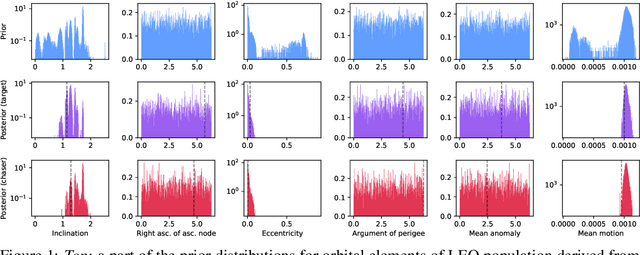

Abstract:Over 34,000 objects bigger than 10 cm in length are known to orbit Earth. Among them, only a small percentage are active satellites, while the rest of the population is made of dead satellites, rocket bodies, and debris that pose a collision threat to operational spacecraft. Furthermore, the predicted growth of the space sector and the planned launch of megaconstellations will add even more complexity, therefore causing the collision risk and the burden on space operators to increase. Managing this complex framework with internationally agreed methods is pivotal and urgent. In this context, we build a novel physics-based probabilistic generative model for synthetically generating conjunction data messages, calibrated using real data. By conditioning on observations, we use the model to obtain posterior distributions via Bayesian inference. We show that the probabilistic programming approach to conjunction assessment can help in making predictions and in finding the parameters that explain the observed data in conjunction data messages, thus shedding more light on key variables and orbital characteristics that more likely lead to conjunction events. Moreover, our technique enables the generation of physically accurate synthetic datasets of collisions, answering a fundamental need of the space and machine learning communities working in this area.
 Add to Chrome
Add to Chrome Add to Firefox
Add to Firefox Add to Edge
Add to Edge